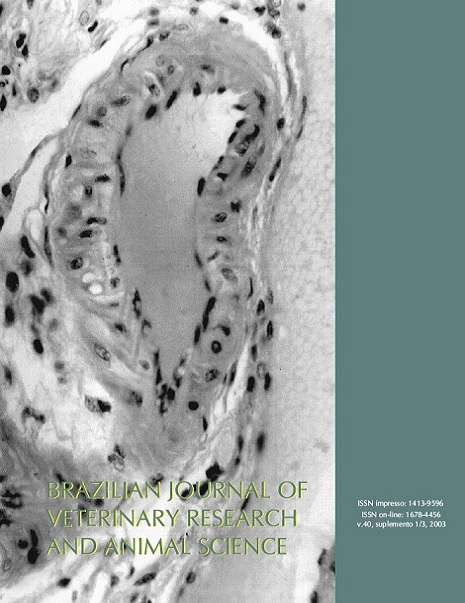Mineral deficiencies in beef cattle from southern Brazil
DOI:
https://doi.org/10.1590/S1413-95962003000700007Keywords:
Mineral profile, Mineral deficiency, Southern Brazil, Beef cattleAbstract
Minerals play an important role in the cattle metabolism with great impact in productive and reproductive performance of animals raised on extensive grasslands. At present, there is a lack of information concerning mineral deficiency throughout the analysis of biological fluids in Rio Grande do Sul State (southern Brazil). The Central Valley region of this State is characterized by extensive production on natural pastures with poor mineral supplementation. The low levels of minerals found by previous studies on pastures in this area motivated this research. The aim of the present work was to detect possible mineral deficiencies in beef cows by determining concentrations of minerals in biological fluids and in pasture. There were determined concentrations of phosphorus, calcium, copper, zinc, glutathion peroxidase (as indicator of selenium status) and thyroxine (as indicator of iodine status) in blood, sodium and potassium in saliva, and calcium, phosphorus, potassium, zinc, copper, sodium and iron in pastures, in four different periods of the reproductive cycle as follows: service period (artificial insemination), clean up bulls period, end of gestation and early lactation. Four herds were selected in Cachoeira do Sul County for this study which included 112 animals. The results showed marginal deficiencies of phosphorus, copper, iodine and selenium. Calcium concentration was below normal level and could be related to the low protein content of pasture. Most critical periods were the end of gestation and the early lactation.Downloads
Download data is not yet available.
Downloads
Published
2003-01-01
Issue
Section
UNDEFINIED
License
The journal content is authorized under the Creative Commons BY-NC-SA license (summary of the license: https://
How to Cite
1.
Valle S de F, González FD, Rocha D, Scalzilli HB, Campo R, Larosa VL. Mineral deficiencies in beef cattle from southern Brazil. Braz. J. Vet. Res. Anim. Sci. [Internet]. 2003 Jan. 1 [cited 2024 Apr. 19];40(supl.):47-53. Available from: https://revistas.usp.br/bjvras/article/view/11275





